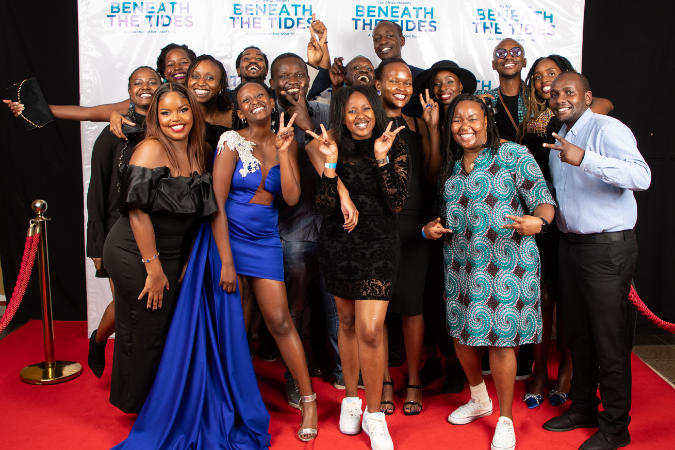When we started working on Beneath The Tides, our goal was simple — to distribute these short films and bring them to Kenyan audiences who rarely get the chance to see local stories on the big screen.
Too often, Kenyan short films reach international audiences through film festivals, but the very people these stories are meant for miss out. To change that, we curated a collection of five short films (Baba, Stero, Mawimbi, Inheritance, and Ziwa) exploring powerful themes of family and institutions, brought to life by talented filmmakers from Kenya and Uganda.
We wanted to shift the narrative by giving these films a platform to be seen and appreciated by Kenyan audiences, both in cinemas and through a community screenings tour across Kisumu, Nakuru, Mombasa, and Nairobi and use the films as a tool for sparking change and meaningful conversations.
Since officially announcing Beneath The Tides in February, we’ve gained valuable insights through the impact and distribution phase. Here are some of the key lessons we've learned along the way:
1. Listening to the Audience
From the onset, we knew that audience feedback would be crucial for us through the impact and distribution phase. At the premiere, we shared a short survey via a QR code on-screen to gather feedback on how people consume Kenyan films and what stories they want more of.
We continued collecting feedback throughout the theatrical run and during our community screenings. It wasn’t just about showing films — we wanted to learn from our audience. This data has been incredibly useful and will help us improve future productions and better connect with Kenyan audiences.
2. The Power of Partnerships
Partnering with people who share your vision makes a world of difference. For us, working with local influencers, organizations, and press was key to making screenings outside Nairobi a success. Local partners not only helped us with mobilizing and promoting the screenings but also helped create a sense of shared ownership and purpose with the films and audiences.
We owe a lot to our partners, including GIZ, who made the Kenyan premiere possible. Our community screenings were further supported by HEVA Fund, Alliance Française, and the French Government's Creation Africa programme, as part of the 'Hii Stage Performance and Touring Grant' that also supported 10 other Kenyan creatives.
Building these great partnerships helped us extend our reach and connect with audiences in a more meaningful way.
3. Consistent Marketing Pays Off
Marketing wasn’t just a last-minute push for us — it was an ongoing effort. From the start, we made sure to keep the momentum going by mixing social media, digital marketing, and using local influencers to spread the word. Working with local press in Kisumu, Nakuru, and Mombasa helped bring more awareness to the event.
In Kisumu, we got support from a local station called ‘Chung Onagi’ who helped us get word out. In Nakuru, the local publication, ‘Mtaa Wangu’ gave us some coverage and we partnered with Raha TV in Mombasa to also highlight the event.
One big takeaway: don’t rely on just one platform. By using different marketing channels, we built hype and kept people talking about the film. Consistency is key when it comes to creating buzz!
4. Exploring New Audiences
With Beneath The Tides, we wanted to reach beyond the typical cinema crowd. We hosted special screenings for high school students, university students, and creatives. In Nakuru, we brought together ‘drama club’ students from four different schools, and in Mombasa, we organized masterclasses on acting, scriptwriting, and directing for local creatives. In Nairobi, we made the event an experience with performances by singer Natalia Kyalo and spoken word artist Arapha.
One key takeaway was the importance of planning and strategizing in advance. While customizing the experience for different audiences is crucial, we also learned that flexibility is equally important. Each location had its own unique challenges, and being adaptable allowed us to adjust logistics on the go, ensuring the screenings went smoothly.
5. The Power of Storytelling
Through this journey, we witnessed firsthand the power of storytelling. The films we presented didn’t just entertain—they inspired, taught, and mobilized communities. It was a reminder of how stories can connect with audiences on a deeper level and spark conversations that go beyond the screen.
Conclusion
These are just a few of the lessons we’ve learned so far, and we’ll continue sharing what we learn on this journey. If anyone is interested in discussing Impact & Distribution, please feel free to reach out to our Impact and Distributions Manager, Chloe Genga, at chloe@lbxafrica.com.
